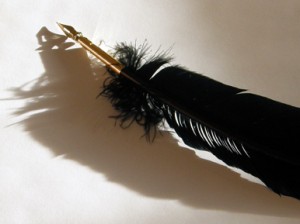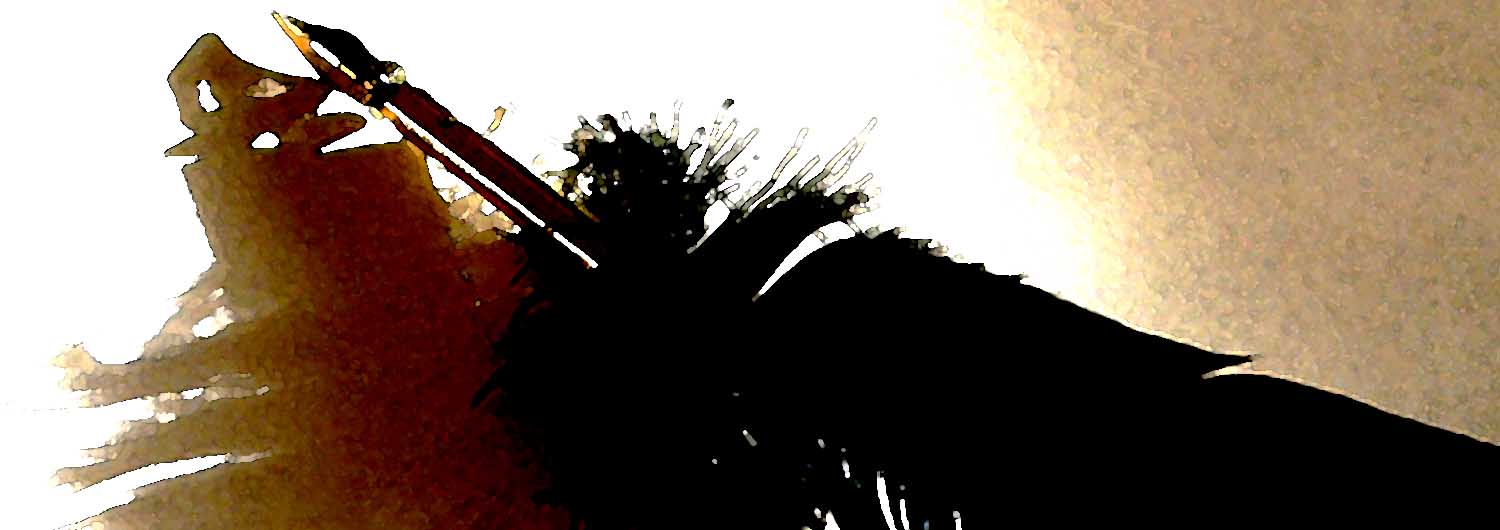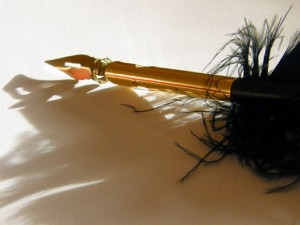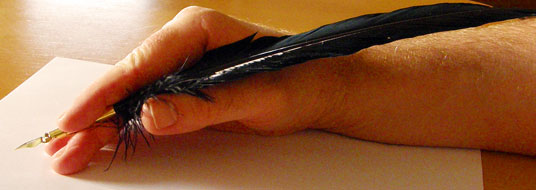 I’ve written almost every day this past week, but my average (696 words a day) is down on last week. I’m still having difficulties keeping account of my time spent on writing and other creative things. (Read: I’ve given up trying for the moment.) I think it will become easier to register hours once I get into a regular rhythm after we get back from Spain in September. At least, I hope so. [It didn’t – Note added 4/12/08]
I’ve written almost every day this past week, but my average (696 words a day) is down on last week. I’m still having difficulties keeping account of my time spent on writing and other creative things. (Read: I’ve given up trying for the moment.) I think it will become easier to register hours once I get into a regular rhythm after we get back from Spain in September. At least, I hope so. [It didn’t – Note added 4/12/08]
Elin’s story
In the meantime I have decided (90% decided) to write Elin’s story. I’ve been talking about it on and off for months now. Though I do swing away to Beastsburg, or to Sweden Observed, or to Dan, Susan and Huge (these are working titles – they mean something to me!) I find myself coming back to Elin, so I think I will plump for her. I spent some time on Libris last week and identified three or four dozen books that might be good background reading.
Over the last 20 years there have been quite a few new books on Elizabeth I and her times by women historians who have been looking at the difficulties Elizabeth faced. The balancing act she performed as a younger woman, to establish her authority in a world used to being steered by men. That must come into the book, so I need to look at a few of these as I go along.
Minnette’s warning
At the same time I keep remembering Minnette Walters (the detective story writer) in an interview she gave once. She commented that it seemed to her there were two different sorts of writer. On the one hand the writers who carry out meticulous research and then write their stories. On the other, the ones who write the stories and then carry out the supporting research. She felt she was one of the second sort. In the interview as I remember it, she was very diplomatic but she said there was a trap which writers of the first sort sometimes fell into. They did so much research, they were reluctant to just let it sink into the background. Instead there was a strong temptation to showcase it. (Look how much work I’ve done!) To the detriment of the story.
I don’t want to fall into that trap, but I fear it’s a real possibility.
In illustrative idea
On my way home after my morning walk, I thought up a way of illustrating this blog. I want to set up my workspace around the computer so that I can take a weekly (or even daily) picture of myself “At the Quill”. I could have the camera set up on a tripod on the table next to me and I can put a pin board on the wall to my right. On the pin board I could have a date/diary, relevant pictures, a motto or two and the current running total of words written. It’s not terribly exciting, but it’s something to have. After I’ve completed my first 3 month stint I could string all the pictures together in a video sequence so you can see how the numbers increase (and my hair grows longer, I suppose.) [Another idea stillborn.]
The Quill
It would give me a place to display the quill too.
Have I explained that yet? I don’t think so.
It was my last class of students at Ållebergsgymnasiet in Falköping. They gave me the quill as a farewell present at the end of term. I was really touched. I told them that I wouldn’t actually be using it (even despite the bottle of ink that came with it). I’m a lousy penman. But I promised that I would keep it and think of them whenever I looked at it.
I may also have told them about my history with ink pens.
Ink and I
When I was 16 or 17, my history teacher (Gail Durbin – who went on to work at Norfolk Museum) used to insist on us writing with ink pens. I had various ink pens over the years, mostly cartridge pens. In these you inserted a little ink cartridge into the shaft of the pen and then shook the ink down to start it flowing. But I did have a Parker fountain pen at one point – a birthday present, no doubt. That one you dipped into a pot of ink and then pulled down a lever in the pen’s shaft which drew ink up into the pen.
It didn’t really matter which pen I used, they were all diabolical inventions as far as I was concerned. I got ink everywhere, over my fingers, on the cuff of my shirt, on my nose when I pushed my glasses back up. And of course I blotted everywhere all over my work. I still don’t understand why Miss Durbin insisted on ink pens. Maybe she thought she was getting us to practice a skill we would find useful for the rest of our lives. How wrong you can be. I moved over to biros (ball-points) as soon as I could, and then to typewriters and ultimately computers. I’ve not written with an ink pen since I was 18. (I mean, I may have written a note or signed a document with an ink pen when nothing else was available, but regular use – no.)
Romance
But there is romance associated with a quill, I recognise that, and it’s a good symbol for a writer. Especially one who also pretends to be an historian between times.
This piece dates from July 2008. I wrote it for the private diary on my computer, though I always intended to post it on-line. I think it finally went up on my first brief Supercargo site in 2009, then got transferred her in June 2010. Revisited now and revised for spelling and SEO fine-tuning 10 Dec 2016.



